“Can the world be old ... when treasures so exquisite as these are … coming to light?”
Once upon a time, in a land not far away, a small book of fairy stories was published. Such might be the beginning of a story about the creation of Hans Andersen’s Fairy Tales. Having recently acquired a copy of the exceedingly rare first edition of this book, entitled Eventyr, Fortalte for Børn or "Fairy Tales Told for Children", we decided to have a brief look both at the author and at the lasting appeal of the stories themselves.
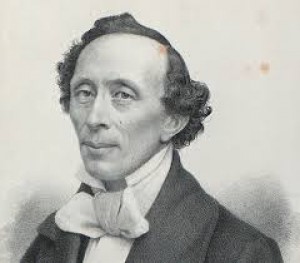
Born into an impoverished family in Odense, Denmark at the turn of the nineteenth century, Hans Christian Andersen wanted above all things to escape the legacy of his background, gain wealth and even more importantly, become famous.
His father worked as a shoemaker and is described by Andersen in his autobiography, The Fairy Tale of My Life as “a richly gifted man with a truly poetical mind”. He doted on young Hans Christian, spending all his spare time handcrafting toys, making him pictures and reading aloud from La Fontaine, Holberg and The Arabian Nights. His mother, a few years older than his father, “knew nothing of life and of the world, but possessed a heart full of love.” (Andersen’s autobiography)
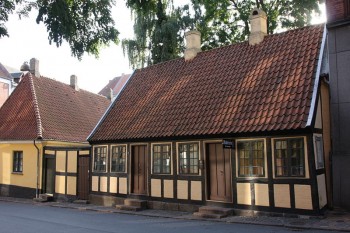
Hans Andersen's Childhood Home in Odense
When only 14 he left Odense for Copenhagen, where he hoped to work in the theatre, as an actor, a singer or playwright, but instead his lack of education and social awkwardness led only to misery and humiliation, until finally Jonas Collins, one of the Theatre Royal’s directors arranged and paid for his schooling. Perhaps because he was so much older than the other students he never really fitted in, and did not achieve any form of scholastic success, which in turn is probably the reason for his simplistic writing style and use of everyday spoken language.
After leaving Copenhagen University Andersen wrote poetry, short stories and a novel all of which were published to moderate success. What he really wanted to do, however, was to write a cycle of Danish folk tales. He had grown up with a love of traditional folk stories, both those read by his father and the myths and legends his illiterate mother used to recount from her own childhood, and Andersen wanted both to retell his favourites and create his own. "As a child it was my greatest joy to listen to fairy tales... it is my intention, provided it meets with approval, to retell several, and some day publish a cycle of Danish folk tales."
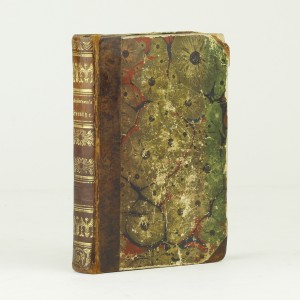
Binding of first edition of Eventyr
In 1835 Andersen wrote to a friend “I have … written some fairy tales for children, and Orsted says that …[they] … will make me immortal, for they are the most perfect of all my writings”. He always wrote with his audience in mind, intending the tales to be for children, but with their parents listening in, and he peopled his stories with “funny characters from daily life – peers as well as commoners”.

Published in three pamphlets over two years before being bound together and issued in one volume, these “Eventyr” did not receive immediate acclaim, one reviewer going so far as to write that he hoped the author would “not waste any more of his time in writing fairy tales for children” as they were “indelicate” and “certainly did not have any edifying effect”. Fortunately Andersen ignored such comments, as these first “unedifying” tales included The Tinder Box, The Princess on the Pea, Thumbelina, The Little Mermaid and The Emperor’s New Clothes, all of which have gone on to be read and loved by children to this day.
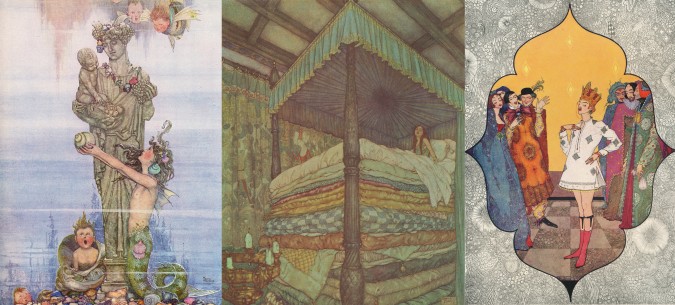
W.H. Robinson's Little Mermaid Dulac's Princess & the Pea Clarke Emperor's New Clothes
Andersen continued to write additional tales to add to the collection until 1872, by which time there were 168, many of which reflected his early life as they were concerned with the miseries of poverty (The Little Match Girl) or the suffering of the outcast (The Ugly Duckling). During his own lifetime Andersen saw the spread of his Fairy Tales' popularity through Western Europe, and a review of the first English translation in The Atheneum in 1846 caught a flavour of the wonder they instilled in their readers “Can the world be old ... when treasures so exquisite as these are … coming to light?”.
They also became a favourite subject of the great illustrators, the Golden Age of Illustration at the start of the 20th century being particularly fruitful, and publishers competed to provide elaborate gift books in which chosen Fairy Tales were interpreted with wondrous design in brilliant colour.
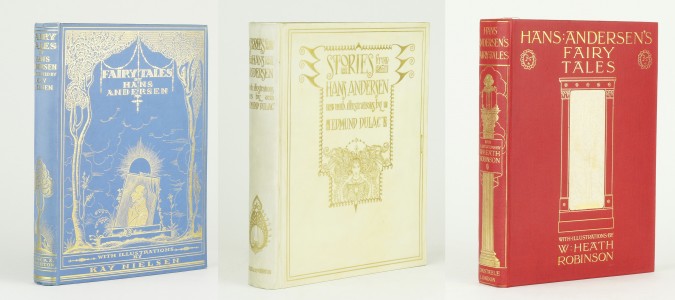
Kay Nielsen Edmund Dulac William Heath Robinson
His ability to write distinctly personal stories with a rich and fantastical mythology, whilst capturing the resonance of traditional folk tales, ensured that his readers, of whatever age, remained captivated. A.S. Byatt wrote that Andersen “can make us see a palace of ice, a forest of seaweed, a mechanical nightingale, a naked king clothed in imaginary clothes, a princess on a tower of mattresses over a pea” and it is this ability that has allowed the Fairy Tales to have such an enduring enchantment. Ask any child which is their favourite fairy tale and even today they are likely to reply The Nightingale, The Red Shoes, The Little Match Girl, The Little Mermaid or indeed any other of a number of tales which have become part of bedtime reading.
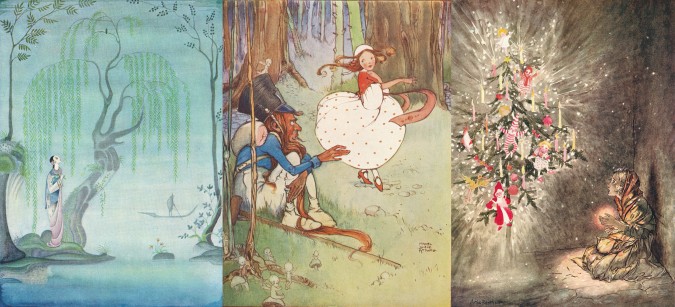
The Nightingale The Red Shoes The Little Match Girl
Hans Andersen's Fairy Tales have been in print since their inception, they have often been bowdlerised and adapted, films have been made of them, music scored and ballets choreographed. Andersen once wrote to a friend that he wanted to “try to conquer future generations” and with his little book of original fairy stories he undoubtedly succeeded.
The first edition of Eventyr, Fortalte for Børn and a selection of illustrated versions of the Tales of Hans Christian Andersen will be on display at the Boston Antiquarian Book Fair in November and will then form part of our exhibition "Once Upon a Fairytale" in our Henley on Thames showroom from 21st November. *
*subject to prior sale
Recent Posts
- The Evolution of Crime
- Tour The Bookshop On Your Screen
- The Genesis of Mr. Toad: A Short Publication History of The Wind In The Willows
- Frank Hurley's 'South'
- The "Other" Florence Harrison
- Picturing Enid Blyton
- Advent Calendar of Illustration 2020
- Depicting Jeeves and Wooster
- Evelyn Waugh Reviews Nancy Mitford
- The Envelope Booklets of T.N. Foulis
- "To Die Like English Gentlemen"
- Kay Nielsen's Fantasy World
- A Brief Look at Woodcut Illustration
- The Wealth Of Nations by Adam Smith
- What Big Stories You Have: Brothers Grimm
- Shackleton's Antarctic Career
- Inspiring Errol Le Cain's Fantasy Artwork
- Charlie & The Great Glass Elevator
- Firsts London - An Audio Tour Of Our Booth
- Jessie M. King's Poetic Art, Books & Jewellery
Blog Archive
- January 2024 (1)
- January 2023 (1)
- August 2022 (1)
- January 2022 (1)
- February 2021 (1)
- January 2021 (1)
- December 2020 (1)
- August 2020 (1)
- July 2020 (2)
- March 2020 (3)
- February 2020 (2)
- October 2019 (2)
- July 2019 (2)
- May 2019 (1)
- April 2019 (1)
- March 2019 (2)
- February 2019 (1)
- December 2018 (1)
- November 2018 (1)
- October 2018 (2)